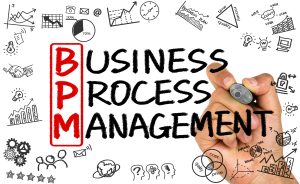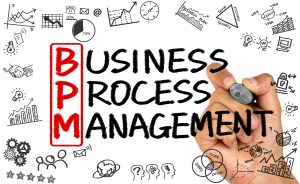
The Point
In turning from the current reactive, makeshift approach to Legal, to a financially sustainable and operationally coherent strategy, what options does the business have?
I suggest three kinds. Continue reading

In turning from the current reactive, makeshift approach to Legal, to a financially sustainable and operationally coherent strategy, what options does the business have?
I suggest three kinds. Continue reading

Part I of this series concluded:
” … In most companies, corporate Legal is a business function without a strategy … without objectives and metrics by which to assess its effectiveness .”
In other words, most corporate Legal functions neglect to target specific results for which executive management can hold them accountable. And they lack measures against which to assess their results (other than generalized cost complaints).
Nevertheless, most corporate Legal functions have what amounts to a substitute for a strategy, implicitly adopted by default. As the article cited in Part I (“The One Thing You Need to Know About Managing Functions“, Roger L. Martin & Jennifer Riel, Harvard Business Review, July – August 2019) put it:
“You have a strategy whether you like it or not … The goal may be implicit … The choices may have emerged without discussion or exploration. The actions may be ineffectual in achieving the goal. But the strategy exists nonetheless.”
So the typical corporate Legal function’s implicit, default substitute for a coherent strategy that actually amounts to a set of tactics:

In most companies, corporate Legal is a business function without a strategy.
Executive management needs to fix this. Because neither attorneys in law firms nor those in-house have defined what is — and is not — within Legal’s scope of responsibility. And, apart from generalized concern about cost, business leadership lacks agreed measures by which this function’s results can be evaluated.
Unaccountable to explicit performance metrics, Legal lacks a meaningful foundation on which to craft its strategy as a corporate function. (“The One Thing You Need to Know About Managing Functions“, Roger L. Martin & Jennifer Riel, Harvard Business Review, July – August 2019).
So Legal’s prevailing mode of operation, with minor exceptions, is reactive. With attorneys both in law firms and in-house making ad hoc responses to client events. Leaving the business enterprise without objectives and metrics by which to assess Legal’s effectiveness as a corporate function. Continue reading

In Part I of this two-part series, I argued that:
1. Our legal system’s demands on businesses persistently exceed Legal budgets,
2. The lawyers who run the corporate Legal function default to adding lawyer headcount when demands increase, and
3. Only professional management skills can increase Legal’s capabilities at scale, using sophisticated business processes to perform recurring routine legal work — and few attorneys know how to do this.
In this Part II we consider how to begin to bring professional management skills to Legal. Continue reading

Demands on corporate Legal functions increasingly exceed their budgets, driven by proliferating regulatory and litigation pressures, and due to persistent needs for contracting, compliance, and day-to-day advice (see here and here). Meanwhile, survey data show that 88% of general counsel plan to reduce the overall cost of Legal over the next three years, with 50% reporting that those reductions will come to 20% or more.
Something’s got to give.
Without capable professional management, Legal will continue to overpay for inefficient use of its resources, risking two likely results:
1. Busted budgets in the Legal function, and
2. Lapses in protection from liability and regulatory exposure. Continue reading

D. Casey Flaherty, legal technology consultancy LexFusion’s Chief Strategy Officer, released an important essay earlier this month. Along with colleagues, he conferred with 435 corporate law departments and 250 law firms in 2022. And with 327 corporate law departments and 240 law firms in 2021. His conclusions:
1. For most companies, the legal system’s demands on corporate Legal exceed that business function’s capabilities to respond. And the gap between those demands and those capabilities have relentlessly widened. So some tasks vital to a company’s legal safety go begging, exposing those companies to potentially catastrophic litigation and regulatory exposure.
2. Meanwhile, corporate Legal has been overwhelmed meeting current needs so that it can’t take the time and money to invest in better ways to do its work. Preoccupied with urgent tactical matters, Legal drops the ball on important long-term strategic needs. So it fails to increase its capabilities at scale, directing almost all of its resources to putting out fires.
3. Despite this precarious mismatch between resources and needs, corporate Legal’s leaders say that they intend, by a large majority, to reduce the budget of their function. Without explaining how they intend to scale capacity to keep pace with law’s relentless, increasing requirements. This is, as Flaherty puts it, “bonkers”. Continue reading

1. By long-established tradition, and (nearly) invariable current practice, only licensed attorneys serve as the CEO of a law firm or lead a corporate law department.
2. As a business lawyer who accepted a corporate client’s offer to run one of its divisions as a general manager 10 years into my legal career, I was largely blind to basic management principles until I became answerable to the P&L.
3. Leading law practice management authority Jae Um recently offered this advice to a class taught by University of Indiana Law Professor Bill Henderson, on how the largest category of major corporate law firms should approach strategy:
“First, professionalize your management. Second, optimize your operating model — because you need to produce quality and consistency at scale and pace. By the way, you need to do it in that order.” Continue reading